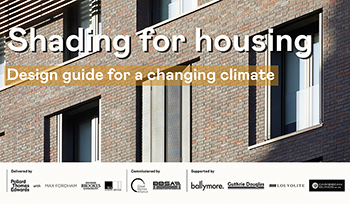Microeconomics
Contents |
[edit] Introduction
Microeconomics is the study of the economic behaviour of individual units, such as households, businesses, markets or industries. It studies the inter-relationships between these units in determining the pattern of production and the distribution of goods and services. This is as opposed to macroeconomics which considers the behaviour of an economy as a whole, such as regional, national or global economies.
Microeconomics is concerned with the demand and supply of particular goods, services and resources, which within the construction industry might include:
It is also concerned with the drivers of changes in prices, such as house prices.
Because resources, and finances are finite choices have to be made about what is produced, what is purchased, prices. There are three main categories of choices that must be made in any society - what, how and for whom. What goods are going to be produced and in what quantity given that there are not enough resources to produce all the things that people may desire?
Microeconomics raises several questions:
- What resources will be used and in what quantity?
- How will things be produced given that there is normally more than one method of production?
- For whom are things going to be produced? In other words how is the nation’s income going to be distributed? The higher the income the more it is possible to consume.
- What alternative choices are available to purchasers?
All societies have to make these choices, whether they are made by individuals, groups or by governments. They can be seen as microeconomic choices as they are concerned not with a total amount of national output, but with the individual goods and services that make it up, what they are, how they are made and who can buy them.
[edit] Choice and opportunity costs
Choice involves ‘sacrifice’ or loss of opportunity; for example, the more houses that are built, the less money will be available to pay for other things such as infrastructure. The more infrastructure projects a nation invests in, the less resources there will be for maintenance, and so on. In other words the production or consumption of one thing involves the sacrifice of alternatives.
This is known as the ‘opportunity cost’. If a factory can produce either 1,000 tons of rebar or 2,000 tons of stainless steel, then the opportunity cost of producing 1 ton of rebar is the 2 tons of stainless steel foregone.
[edit] Rational choices
Economists refer to ‘rational choices’. This means the weighing up of the cost and benefits of a particular activity, whether that is; firms choosing what and how much to produce, a worker choosing to take a particular job or to work extra hours, or consumers choosing what to buy.
To make a rational decision, it is necessary to weigh-up the costs and benefits of each alternative. So, for example, rational decision-making as far as consumers are concerned might involve choosing those items that give the best value for money, i.e. the greatest benefit for the least cost.
The same principle applies for businesses when deciding what to produce. For example, a local general builder who wants to expand into building larger projects. The benefits might include the greater revenue they will generate, whilst the costs might include the use of additional sub-contractors, along with non-financial costs such as a greater burden placed on managers.
[edit] Marginal costs and benefits
Rational choices involve weighing-up marginal costs and marginal benefits. These are the costs and benefits of doing more or less of a given activity. They can be contrasted with the total costs and benefits of all activities. A builder might consider the marginal costs and benefits of expanding. In other words, comparing the costs and revenues of the additional work proposed. If the cost of the additional work is less than the revenue generated then it may be profitable to expand.
[edit] Scarcity and abundance
The central economic problem is scarcity. But are all goods and services scarce? Is anything that is desired truly abundant, and what is meant by abundance?
In the economic sense abundance refers to something for which supply exceeds demand at zero price. In other words, even if it is free, there is no shortage. What is more, there must be no opportunity cost in supplying it. For example, if the government supplies health care free to the sick, it is still scarce in the economic sense because there is a cost to the government and hence, the taxpayer. Two things that might seem to be abundant are air and water.
In one sense air is abundant; there is no shortage of air to breathe for most people for most of the time. But if air is defined as clean and unpolluted, then in some parts of the world it is scarce. In these cases resources have to be used to make clean air available. If there is pollution in cities or near industrial plants it will cost money to clean it up. The citizen may not pay directly – the cleaned up air may be ‘free’ to the consumer – but the taxpayer or industry (and hence the consumer) will have to pay.
Whether water is abundant depends again on where you live and what the water is used for. Water for drinking is not abundant. Reservoirs have to be built. The water has to be piped, purified and pumped, and so on.
[edit] The social implication of choice
Microeconomics does not just study how choices are made, it also considers their consequences.
Under certain conditions the consequences may be an efficient allocation of the nation’s resources. There are, however, a whole series of possible problems that can arise from the choices people make, whether they are made by individuals, by firms or by governments. These problems include such things as; waste, inequality, pollution, nuisance, health problems, safety problems and so on. For example, it might be profitable for a company to tip toxic waste into a river, but what is profitable for them may be unprofitable for society. There are consequences, and therefore costs, resulting from our actions, and these may require interventions in the market, such as government legislation.
[edit] Related articles on Designing Buildings Wiki
- Balance sheet.
- Budget.
- Cash flow in construction.
- Cash flow projection.
- Construction organisations and strategy.
- Corporate finance.
- Equity and loan capital.
- Property development finance.
- Working capital.
[edit] External references
- ‘Construction Economics: An Introduction’, GRUNEBERG, S., Palgrave (1997)
Featured articles and news
Editor's broadbrush view on forms of electrical heating in context.
The pace of heating change; BSRIA market intelligence
Electric Dreams, Boiler Realities.
New President of ECA announced
Ruth Devine MBE becomes the 112th President of the Electrical Contractors Association.
New CIAT Professional Standards Competency Framework
Supercedes the 2019 Professional Standards Framework from 1 May 2025.
Difficult Sites: Architecture Against the Odds
Free exhibition at the RIBA Architecture Gallery until 31 May.
PPN 021: Payment Spot Checks in Public Sub-Contracts
Published following consultation and influence from ECA.
Designing Buildings reaches 20,000 articles
We take a look back at some of the stranger contributions.
Lessons learned from other industries.
The Buildings of the Malting Industry. Book review.
Conserving places with climate resilience in mind.
Combating burnout.
The 5 elements of seiri, seiton, seiso, seiketsu and shitsuke.
Shading for housing, a design guide
A look back at embedding a new culture of shading.
The Architectural Technology Awards
The AT Awards 2025 are open for entries!
ECA Blueprint for Electrification
The 'mosaic of interconnected challenges' and how to deliver the UK’s Transition to Clean Power.
Grenfell Tower Principal Contractor Award notice
Tower repair and maintenance contractor announced as demolition contractor.






















